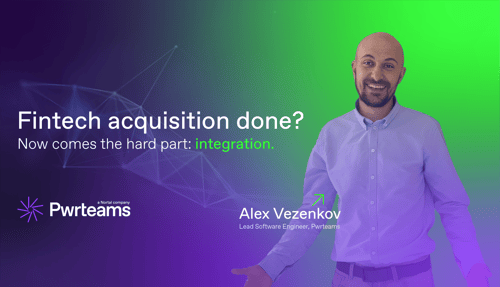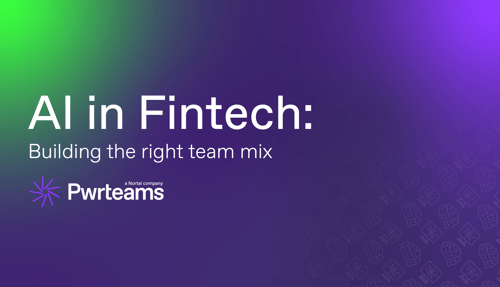Beyond the Staff Turnover: Tap the Benefits of Low Attrition with Dedicated Teams

Consider this: hiring a new employee costs a company 3-4 times their annual salary. The significant figure emphasizes a crucial reality: retaining talent is more financially advantageous than continual recruitment. Maintaining a low attrition rate in a swiftly evolving tech landscape is vital for sustainable progress, enabling your company to pursue its objectives without squandering resources on unexpected replacements. Reducing attrition rates ensures ongoing project momentum and stability. At the heart of this effort lies the establishment of resilient tech teams.
How to do that? One proven way to mitigate attrition’s disruptive impact is securing access to specialized talent through dedicated teams and prioritizing employee satisfaction. Let’s delve into the hidden costs of high attrition rates and explore proactive solutions to tackle this challenge effectively.

What Is the Attrition Rate?
The attrition rate is a barometer indicating the speed at which employees leave a company voluntarily or involuntarily. Businesses use it to measure the overall health of their organization. A low rate reflects stability and satisfaction within the workforce, while a high rate often points to underlying issues causing talent drain.
In the tech industry, where innovation and competition are rampant, attrition rates soar, reaching as high as 12.9%. Shockingly, in 2021, tech companies reported a staggering 50% increase in voluntary employee attrition year over year. This surge can be attributed to various factors, including fierce competition for talent, the relentless pace of technological evolution, and the allure of startup culture.
To put things into perspective, the average attrition rate for all industries hovers around 10%, while anything above is concerning. And if you think a 3% difference is negligible, see it this way — for every 100 employees in your organization, 13 are out during the year. That’s a whole team of developers or engineers (or two teams if you take an average scrum team size of 7 people!)
Attrition Rate vs. Turnover Rate
Attrition and turnover rates both track when employees leave a company, but they focus on different things. Attrition is when someone leaves and isn’t replaced, while turnover is when someone leaves and gets replaced within a specific time. So, it’s possible to have high turnover but low attrition. This scenario suggests that the company is adept at managing its workforce turnover by promptly filling vacant positions, maintaining operational continuity, and mitigating the long-term impact of employee departures.
The True Costs of a High Attrition Rate
A high attrition rate can impose significant financial burdens on businesses, but it’s not merely the budgetary implications that keep CEOs and HR specialists awake at night. Here are the reasons why reducing attrition rates is their number one priority.
Loss of Institutional Knowledge
With each experienced employee’s departure, the organization loses institutional knowledge accumulated over time. They take valuable insights, processes, and expertise with them, causing inefficiencies, mistakes, and difficulties in maintaining consistent standards and operations. Moreover, the departure of key individuals can disrupt critical knowledge transfer to new employees.
Decreased Team Morale and Productivity
Research from Gallup shows that companies with engaged workforces outperform their peers by 147% in earnings per share. Unfortunately, a high attrition rate can negatively impact morale as remaining employees contend with insecurity, anxiety, and increased workloads. The departure of colleagues can disrupt team dynamics, erode trust, and impede collaboration, hindering overall team effectiveness. To top it all, the uncertainty surrounding job stability and the continuous adaptation to new team members can lead to disengagement, burnout, and a decline in productivity.
Recruitment and Retention Challenges
High attrition rates pose significant organizational recruitment and retention challenges, signaling difficulties in retaining existing talent and attracting new hires. The constant need to fill vacancies strains HR resources and incurs additional recruitment costs, including advertising fees, agency commissions, and candidate assessments. Not to mention that frequent turnover can damage the organization’s employer brand, making it less attractive to prospective candidates and exacerbating talent shortages.
Increased Recruitment Costs
Recruiting new talent incurs significant advertising, interviewing, and onboarding costs. According to Glassdoor, the average U.S. employer spends about $4,000 and 24 days to hire a new employee. In the tech industry, these figures can be several times higher. High attrition rates necessitate ongoing investments in HR personnel, recruitment platforms, and candidate assessment tools to manage the recruitment process effectively.
Disruption of Project Continuity
High attrition rates disrupt project continuity, resulting in knowledge gaps, communication breakdowns, and delays in project timelines. This lack of continuity can lead to missed deadlines, compromised project quality, and decreased stakeholder confidence. Addressing these disruptions requires proactive knowledge management strategies, effective succession planning, and clear communication to ensure seamless transitions and minimize project risks.
Impact on Customer Relationships
Once a company’s service gets rated as very poor, only 20% of customers are willing to forgive a bad experience. High turnover rates can negatively impact customer relationships, as clients may become frustrated with frequent changes in their points of contact. This perceived instability and inconsistency in communication can damage the organization’s reputation, leading to negative word-of-mouth and potential loss of business.
Factors Influencing High Attrition Rate
Pinpointing the root causes is paramount to fostering a culture of low attrition. Let’s dissect the primary culprits driving employee departures.
- Employees leave when they see limited chances for advancement. 94% would stay longer if their company invested in their career development.
- Dissatisfaction with job roles or environment leads to high attrition rates. 73% of employees are willing to leave to look for better offers.
- The prevalence of overwork and inadequate work-life balance can contribute to burnout among employees. When individuals feel overwhelmed by the demands, it can result in fatigue, stress, and, ultimately, a desire to seek employment elsewhere.
- Compensation and benefits discrepancies prompt employees to seek better opportunities. 45% of employees rank salary as the most important factor in a job.
- Ineffective leadership erodes an organization’s trust, communication, and morale, driving employees to seek a more supportive and empowering work environment.
- Employees depart when they don’t align with company values. When individuals feel like they do not belong or their values are not reflected in the workplace culture, it can lead to feelings of isolation and disconnection.
Building Tech Teams for a Low Attrition Rate
Pwrteams boasts a low attrition rate of 4.3% among employees hired for clients. This shows that retention in IT teams can be managed and improved through the company’s needs assessment and careful candidate selection. We have cultivated a recruitment process that contributes significantly to this success. The steps we follow are designed to foster long-term employee retention.
“Pwrteams boasts a low attrition rate of 4.3% among employees hired for clients.”
1. Initial Call with a Client
Goal: The primary objective of this call is to gain comprehensive insights into the client’s needs, organizational structure, and project details to lay a strong foundation for the recruitment process.
Activities: We engage in open-ended discussions to gather qualitative data about the client’s company’s culture, internal processes, and overall vibe. Simultaneously, we collect firmographics such as company size, team structure, and project specifics. This information facilitates informed decision-making and ensures alignment between client expectations and recruitment strategies.
2. Recruitment Project Kickoff Call
Goal: The kickoff call aims to deepen the understanding of role requirements, confirm technical details, and establish clear expectations for the recruitment process.
Activities: During the call, our Talent Acquisition Team clarifies the most critical aspects of the role for the client and assesses whether the client prioritizes technical skills alone or values a broader fit encompassing culture, attitude, and team dynamics.
We navigate potential hiring constraints together, charting the most productive recruitment approach. We offer tailored optimization recommendations based on the client’s established processes and preferences. Furthermore, we inquire about the client’s strategy for investing in candidate growth, emphasizing the goal of seamlessly integrating candidates into their team to foster long-term retention.
3. Pre-Recruitment Work
Goal: Acquire initial insights and lay the groundwork for focused candidate engagement aligned with role-specific requirements and candidate preferences.
Activities: Conduct proactive research and outreach within our network to gather comprehensive insights into candidates’ expectations regarding salary, project preferences, and cultural alignment. This proactive approach ensures that our recruitment endeavors are finely tuned to attract candidates closely aligned with the desired profile, enhancing the likelihood of building tech teams with a low attrition rate.
4. Recruitment
Goal: Efficiently identify and engage qualified candidates, ensuring a streamlined and transparent recruitment process.
Activities: We post job descriptions on relevant platforms and conduct targeted outreach to attract potential candidates. Following this, we perform screening calls with selected candidates to assess their suitability for the role. Once pre-selected, we share these candidates with the client for thorough evaluation.
Subsequently, we facilitate client-led initial calls with candidates and actively contribute to the decision-making process regarding candidate progression. Throughout these interactions, we uphold a steadfast commitment to transparency, epitomizing the collaborative partnership with the client.
5. Project Supervision
Goal: Gather feedback, manage expectations, and support clients and candidates throughout recruitment.
Activities: We seek feedback from candidates and clients throughout the recruitment process to address concerns and ensure that expectations are managed effectively. We provide comprehensive support to candidates, assisting them in interview preparation and offering guidance as needed to help them succeed.
Additionally, we continuously refine and adjust our recruitment process based on the feedback and insights gathered to enhance its effectiveness and ensure a seamless experience for all parties involved.
6. Long-Term Engagement
Goal: Ensure the long-term fit and satisfaction of both the candidate (now an employee) and the client.
Activities: Our approach goes beyond standard onboarding. What truly sets us apart is our commitment to proactive relationship-building and personalized assistance. We deploy Client Partners and People Partners to actively engage with our clients and employees. Client Partners conduct regular meetings, ensuring client needs are promptly addressed. People Partners cultivate trust and open communication with employees through personalized one-on-one sessions, addressing individual needs comprehensively.
The long-term support emphasizes a thorough and adaptable response to inquiries and challenges. We prioritize transparency and clarity in our communications, handling each request meticulously. Regular evaluations enable us to identify and mitigate potential risks, facilitating Performance Improvement Plans or tailored support in response to resignation notices, employee dissatisfaction, and career development needs.
Imagine an employee who desires to explore new avenues for professional growth and expand their skill set and competencies. They confided in their team leader, a dedicated member of our team, sharing their aspirations. Recognizing the employee’s value and potential, the team leader took proactive steps by initiating communication with the client. Simultaneously, the Client Partner intervened to engage with the client, exploring possibilities to retain the employee. Together, they dug deep to determine what motivated the employee to change their career aspirations and found a solution that worked for everyone, aligning the employee’s goals with the client’s needs.
Through collaborative problem-solving, our team seamlessly integrates with our clients, becoming an integral extension of their workforce. This proactive approach allows us to tailor recruitment efforts precisely, guaranteeing seamless integration and immediate value addition.
Reducing Attrition Rate with Pwrteams
Our recruitment process proves successful as many clients find ideal candidates that fuel their ranks and stay with them long-term. Showpad, a sales enablement iOS application, stands as a testament to the effectiveness of our collaboration.
Pwrteams have been their secret weapon for over ten years, filling crucial roles with top talent and contributing to their low attrition rates. Our assistance has propelled Showpad’s product launches and market expansion, leveraging our expertise in finding the right tech specialists.
Another example of our commitment to providing top-tier talent and fostering long-term relationships is our partnership with TUI Group, a global travel and tourism company. Working together for many years, we’ve assembled a dedicated team of over 150 professionals who have become integral to their operations.
But that’s not all—we have numerous client success stories that further attest to our prowess in recruitment and retention.
Find the Perfect Fit for Your Low Attrition Rate Teams
Concerned about your attrition rate inching closer to the 10% threshold? In the fast-paced world of tech, high attrition can spell trouble, but here’s the good news: we’re here to support you. Let’s work together to build a resilient and steadfast IT team with minimal attrition. Reach out today to ensure your company stays on track for success and thrives in the long run!
Write your own
success story
with Pwrteams!
Share your details in the form, tell us about your needs, and we'll get back with the next steps.
- Build a stable team with a 95.7% retention rate.
- Boost project agility and scalability with quality intact.
- Forget lock-ins, exit fees, or volume commitments.


